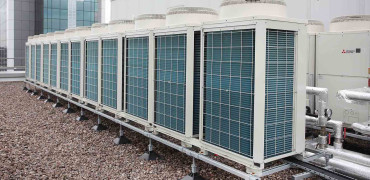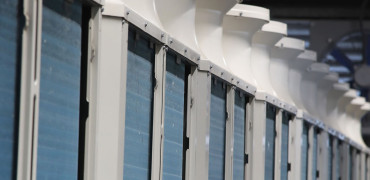Just in case you missed it (and you will not be alone in that!) one of the most important annually released government documents dropped last week, namely, the Future Energy Scenarios document produced by NESO.
I must admit that I watch these things very closely and even I was caught a bit unaware of the timing of this one.
If you don’t know who NESO is and why it is so important, it stands for the National Energy System Operator and it is responsible for managing and planning the UK's electricity and gas networks.
Previously owned by the National Grid, NESO holds the licences to operate both the electricity and gas systems across the UK. NESO is also expected to work closely with the government’s new Great British Energy company to accelerate the deployment of renewable energy across the country.
Heat pumps are clearly seen as the answer to a lot of the net zero questions
Four distinct pathways
I’ve only just started digesting the very, very detailed 170-page report on this but I can immediately see that there are some significant headlines and, although we will of course break this down into more ‘bite sized’ components, here is my immediate take on the new announcement.
Firstly, NESO has now broken the UK’s journey towards the energy scenario of the future into four phases (waves) – Foundation, Acceleration, Growth and Horizon
The pathways to moving through these waves are modelled against four different scenarios, called: Holistic Transition; Electric Engagement; Hydrogen Evolution; Falling Behind.
The modelling predicts that only two of these possible pathways will result in the UK meeting its legally binding Carbon Budget 6 (Holistic Transition and Electric Engagement) and interestingly, the intermediate Nationally Determined Contribution for 2030 (agreed as part of the Paris climate change agreement), can only be achieved by the most ambitious pathway of Holistic Transition with all others falling short of this sooner legally binding limit.
A shortfall in heat pumps
One of the statements is based around a 10-year outlook and it states that: “Switching to low carbon fuels and technologies is crucial in all our net zero pathways. The Ten-Year Forecast (10YF) has a shortfall of almost 4 million heat pump installations relative to the pathways in 2035 if progress is not accelerated.”
The reason that the UK won’t actually achieve the Labour Government’s stated ambition of a zero Carbon electricity grid by 2030 has been disguised in the below bit of jargon!
… “NESO’s Clean Power 2030 advice (November 2024) was based on electricity demand from the Holistic Transition pathway in FES 2024. Our modelling for FES 2025 is based on updated baseline whole energy demand data.”
There is also a prediction that more and more homes will ultimately start using air conditioning and we as a manufacturer will need to model heat pump performance in both air-to-air and air-to-water to see how they stack up at different design temperatures and parameters.
In this way, we will be able to advise government and the market what heat pump performance is needed to achieve future decarbonisation scenarios.
Low hanging fruit in commercial buildings
A real positive for me in this report is that this time, commercial heating gets its own section in this document (which is a nice change!) and heat pumps are clearly seen as the answer to a lot of the net zero questions.
A really interesting statistic relating to the residential sector is that all four pathways predict a 160tWh reduction in gas consumption by domestic houses by the 2030’s. This happens to be almost the same as the entire total non-domestic gas consumption figure of 156 tWh (remember that 1 tWh is 1 billion kWh).
So, in essence, the report predicts that they will save the same amount of gas being used from homes by the 2030’s as is currently used by the entire commercial sector!
And this is why I think it’s time that government looked more closely at the immediate savings that can be achieved in the commercial sector – the so called ‘low hanging fruit’.
I’ve written before about the lack of a strategy to decarbonise commercial buildings and the huge potential they offer.
I’ll keep digging through the NESO document for other learnings to bring to you. In the meantime, I think I better enjoy this one as it looks like I will have to find a new favourite annual report as NESO don’t seem to plan on publishing an update to the FES document until 2028!!
Oh well, we can’t have everything can we!
Chris Newman is Zero Carbon Design Team Manager




